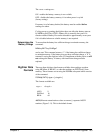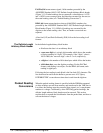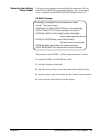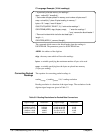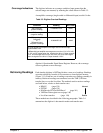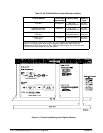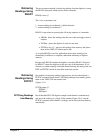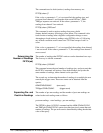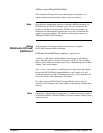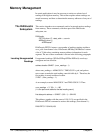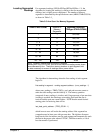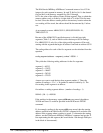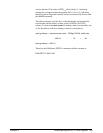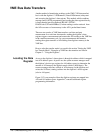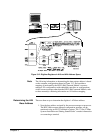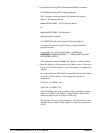
SENSe[<
chan
>]:SWEep:OFFSet:POINts?
This command will return 0 if no pre-arm readings are specified, or a
negative number representing the number of pre-arm readings.
Note If the digitizer measurement sequence is aborted (ABORt command), the
FETCh[<chan >]:COUNt? command is the only way to determine the
number of readings to be retrieved by FETCh?. If pre-arm readings are
included in the measurement sequence, there is no way to determine the
number of post-arm readings. The digitizer will attempt to return up to
TRIGger[:STARt]:COUNt readings.
Using
DIAGnostic:UPLoad:
SADDress?
A third method of retrieving readings from memory is using the
HP E1406 Command Module command:
DIAGnostic:UPLoad:SADDress? <
address
>, <
byte_count
>
<address > is the address of the digitizer’s data register in A24 address
space. The data register’s offset in A24 space is 12 (0C
16
). The A24 base
address can be found as described in the section "Determining the A24 Base
Address" later in this chapter.
<byte_count > is the number of (reading) bytes to upload from the digitizer.
Because the HP E1405/06 Command Module is only capable of 8- and
16-bit data transfers over the VXI backplane, the byte_count parameter will
always be 2 (bytes) times the number of readings.
In systems using an HP E1405/06 Command Module and an external
controller, this command is the fastest method of transferring readings from
memory.
Note Appendix C "Register-Based Programming" contains an example program
in which DIAGnostic:UPLoad:SADDress? is used to retrieve readings from
digitizer memory.
Chapter 3 Understandin
g
the HP E1429 Di
g
itizer 141



